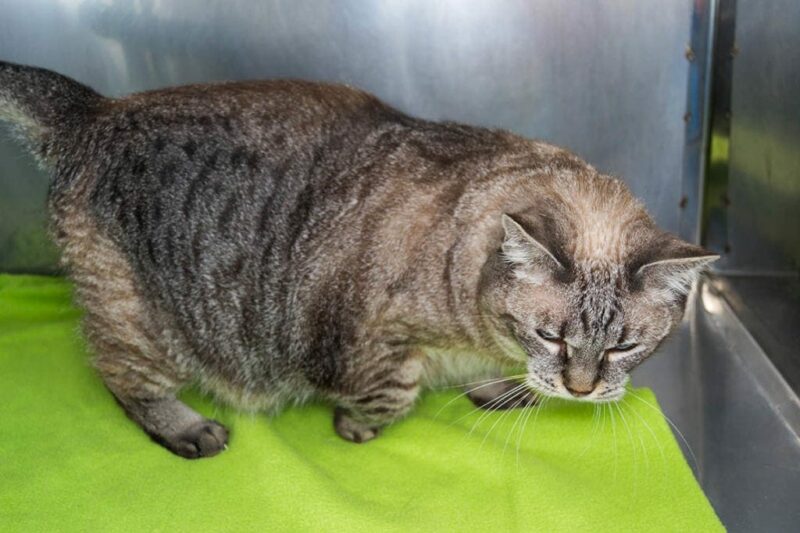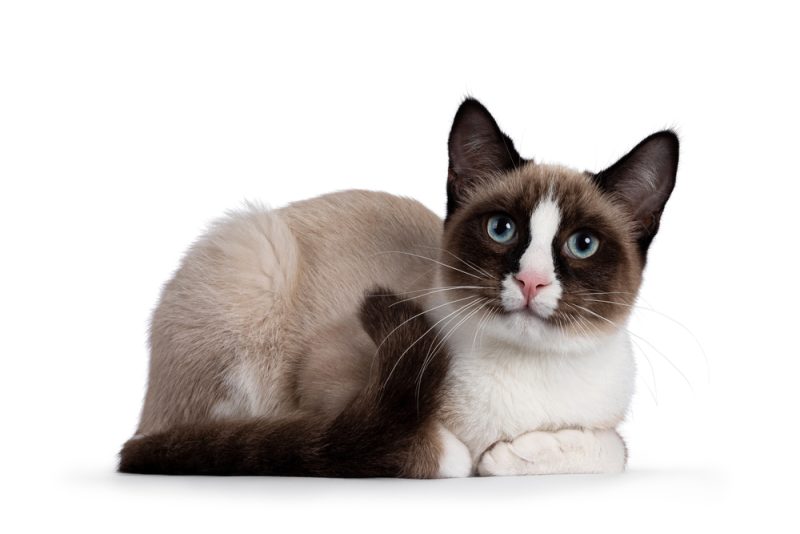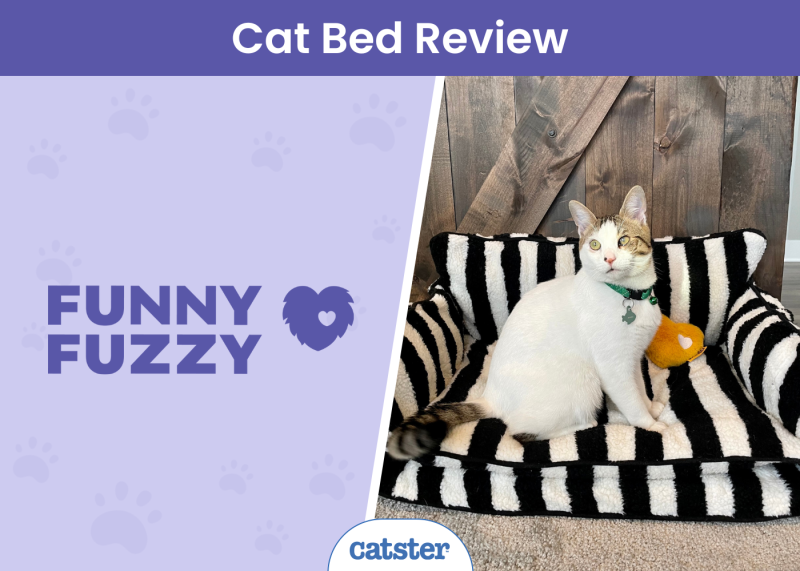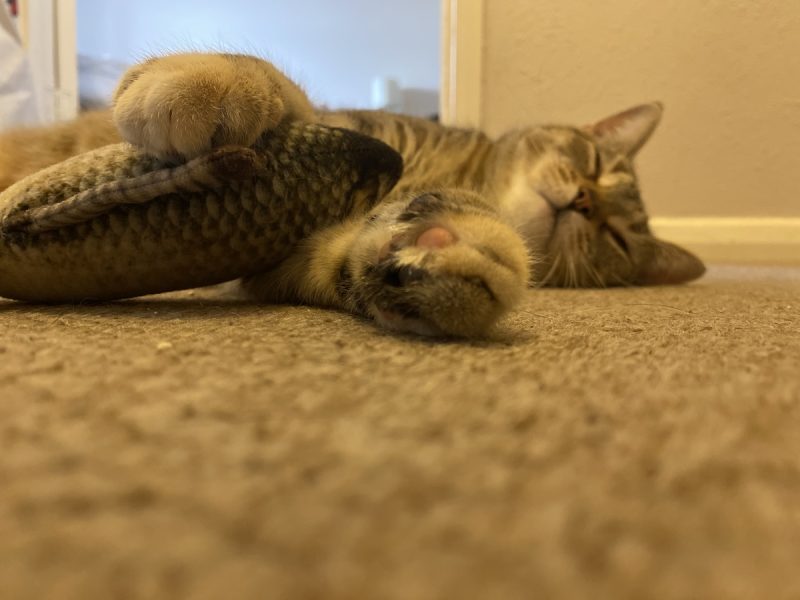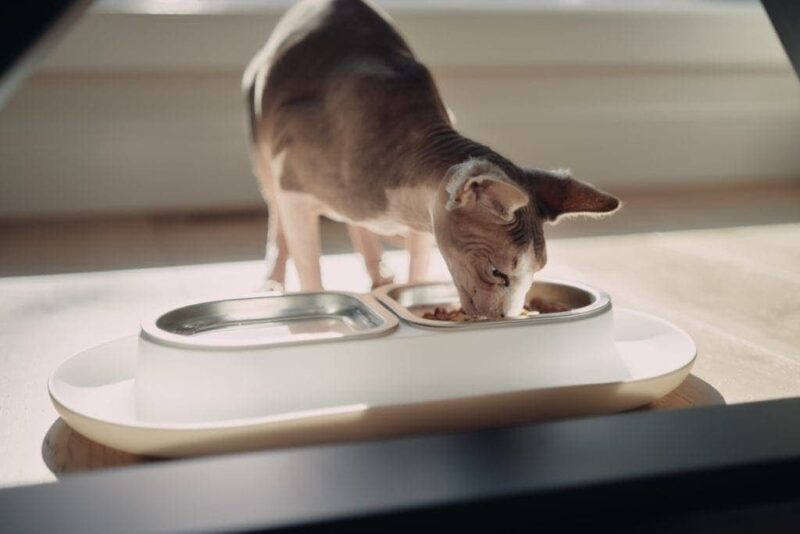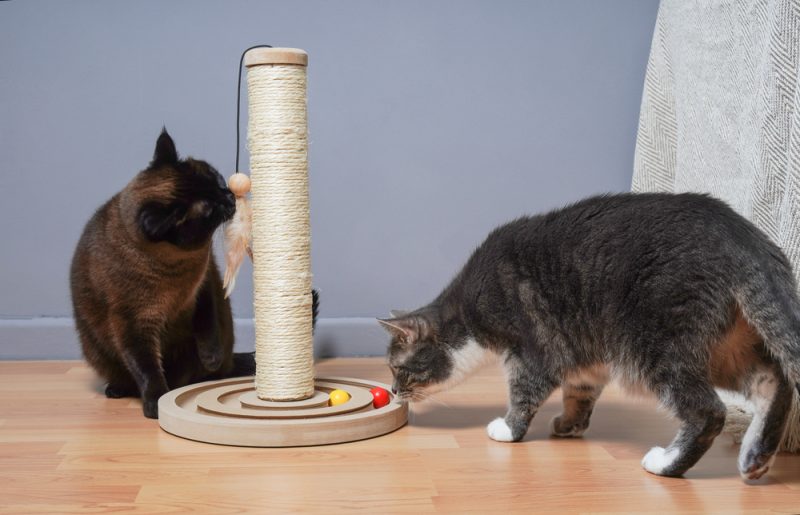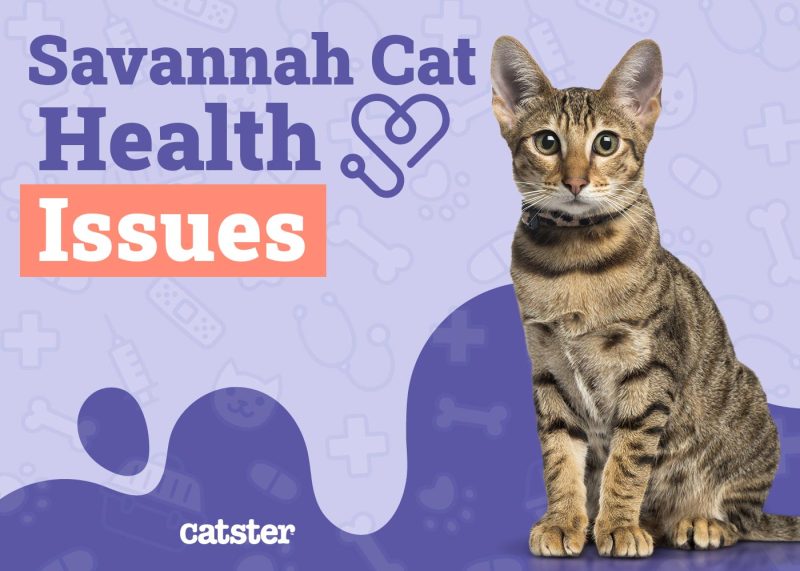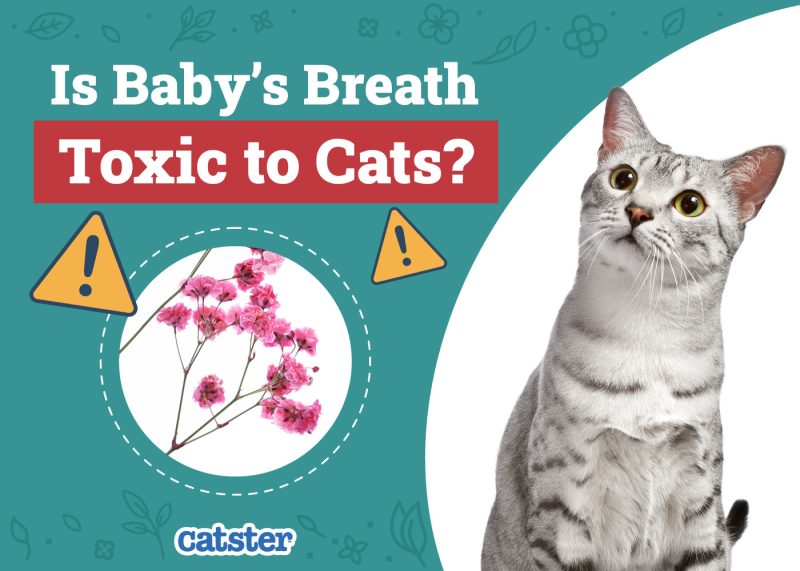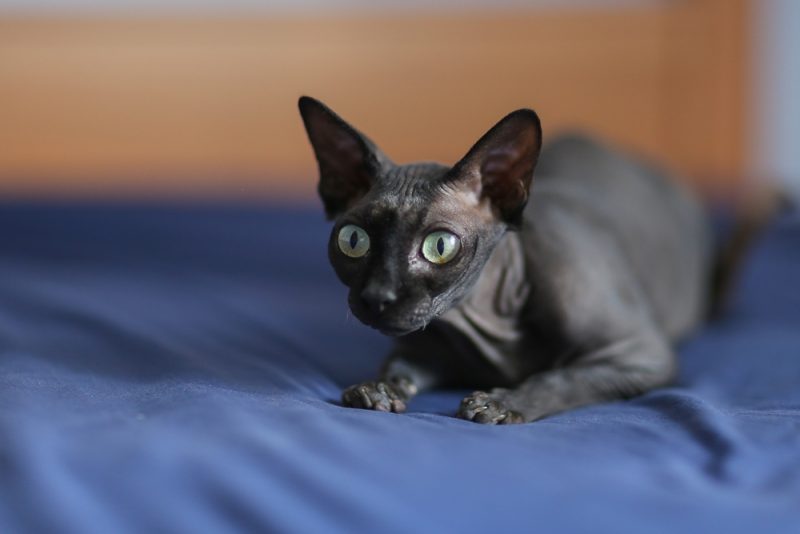Cats, particularly older ones, can suffer from arthritis. Technically known as osteoarthritis (OA), the condition involves progressive joint inflammation and degeneration, which is influenced by many factors. The resulting pain often reduces mobility and negatively impacts cats’ quality of life. Almost 90% of cats older than 10 show signs of the condition in at least one joint, unfortunately making arthritis a common problem in aging cats.
Osteoarthritis typically worsens over time, and there’s no cure for the disease. But arthritic cats can live long, happy, and healthy lives thanks to medication, weight management, environmental home adjustments, and physical therapy. Keep reading for 10 tips on home care for a cat with arthritis.
However, please do not mistake these guidelines and tips for individual veterinary advice, and if your cat is uncomfortable, stiff, limping, or has a hunched posture, they should be checked out by a vet immediately.

If your cat is suffering with arthritis, it’s important to first consult with a veterinarian. They can establish which joints are affected, discuss the cat’s nutrition and weight plan, various choices of painkillers, other medication and joint supplements, physiotherapy, home adjustments and more. It’s important to follow their advice, as your cat may have other underlying health issues that will impact their nutrition and medication choice.
The 9 Tips for Helping Your Cat With Arthritis
1. Measure What You Feed Your Cat
Cats with osteoarthritis are sometimes overweight, and many benefit from dropping a few pounds. Around 60% of North American cats are overweight, so most of us have gotten used to seeing kitties that weigh too much!1 Speak with a veterinarian to get an idea of your pet’s current condition and whether your companion would benefit from losing weight.
Serving your buddy the right amount of food is essential for feline weight management. Your cat’s food packaging should come with specific feeding instructions to help you determine how much to feed your cat based on their current weight and whether your buddy needs to gain, lose, or maintain their current body mass. Figure out how much your pet really should be eating, and use a measuring cup to ensure you’re giving your cat the right amount of food.
Depending on any other underlying health conditions, some cats suffering with arthritis may also need a prescription diet if they have kidney disease, liver disease, or something else. Consult with a vet on this matter as well.
Need veterinary advice but can't get to the clinic? Catster recommends PangoVet, our online veterinary service. Talk to a vet online and get the answers and advice you need for your cat without having to leave your living room — all at an affordable price!

2. Consider a Weight Loss Food
Some cats need extra help with losing weight, as they can’t burn enough calories to drop pounds while eating their current food. Feline weight loss formulations can help some cats struggling to reach a healthy weight. Most have fewer calories than regular cat food and either contain lots of fiber or protein to keep cats from becoming hungry between meals, or specific nutrients that may increase the metabolism.2
High-fiber options help cats feel full and increase regularity by adding bulk to their diets. They delay stomach emptying and allow cats to feel full for longer.

3. Avoid Human Food
Human food is a culprit for feline obesity and weight problems. Food made to please human taste buds is often far too high in calories for cats to consume regularly without packing on the pounds.
Because cats and humans have different nutritional needs, cats don’t get the nutrients they require for optimum health when eating human food. Avoiding human food is one of the easiest ways to ensure your buddy doesn’t accidentally eat something toxic to cats, like onions or raisins.1
4. Limit the Treats
Keeping treat consumption under control can also play a massive role in helping your cat drop a few pounds, which often improves the pain and discomfort associated with osteoarthritis. About 5-10% of your buddy’s diet can come from healthy feline treats, ideally closer to 5%.
But making delicious homemade cat treats is also possible (and quite easy). Cats typically love meat and fish. Just throw a bit of lean meat or fish in the pan to make a yummy feline-friendly treat. Avoid adding any seasonings such as oil, salt, onions, or salty broth. Cook the meat thoroughly and remove all bones before serving it to your cat. Alternatively, consider making some bone broth to add to your companion’s food as a treat. Put leftover bones in a pot with water, boil, and let simmer!
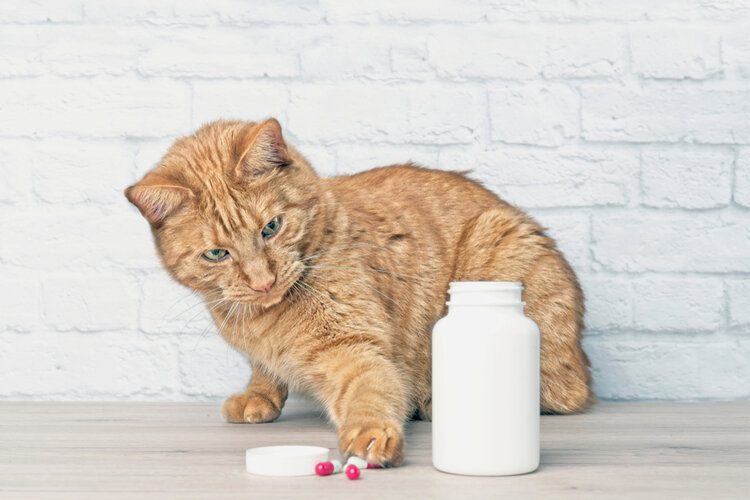
5. Consider Supplements
Many veterinarians recommend dietary supplements for cats suffering from osteoarthritis, specifically glucosamine, chondroitin, and omega-3 fatty acids.3 Some weight management and joint condition formulations feature these nutrients, giving you an easy way to include them in your pet’s diet.
However, you should check with a veterinarian before giving your cat supplements. Several over-the-counter products are available, but a vet can determine which supplement will benefit your pet the most.
6. Dial Up the Comfort
Cats with stiff, painful joints often enjoy a bit of cozy warmth, as heat sometimes eases arthritis-related pain. Give your cat lots of comfortable and padded places to sleep. Self-warming beds give cats warm, soft places to curl up and snuggle. You can also use beds with memory foam to provide gentle comfort and support.
Beds with lower edges make it easy for cats with limited mobility to get in and out comfortably. Larger beds allow pets to sprawl out, and options with bolster backs are great for kitties that love to sleep curled up. Consider putting extra cat beds in different locations around your home to ensure your cat has easy access to a comfortable place to hang out and snooze.
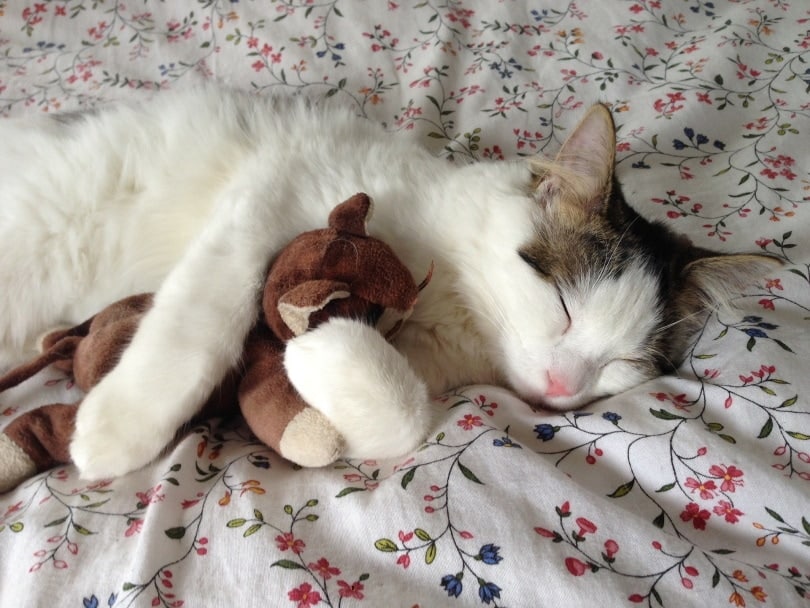
7. Improve Your Pet’s Dining Area
Elevating your cat’s food and water bowls can make it easier for pets with creaky joints to eat without pain. Elevated feeding stations allow pets to eat without bending over, which often makes things easier for arthritic cats.
Some allow you to adjust the height to find the most comfortable position for your cat. Many have cutouts designed to securely hold bowls in place as your buddy eats or drinks. Consider placing a soft towel or mat on the floor for your cat to sit on as they eat, as a bit of cushioning and warmth often help arthritic cats feel more comfortable.
8. Fix Your Buddy’s Litter Box
Cats suffering from limited mobility often have special litter box needs. Large litter boxes that allow cats plenty of room to get comfortable are great for cats with mobility problems, and models with low edges give cats easy litter box access.
If you live in a home with stairs, consider putting a litter box on the floor where your companion spends the most time so they don’t have to struggle with stairs to use the bathroom. Place a few extra litter boxes around the house so your cat doesn’t have far to go when nature calls.
9. Make Home Adjustments
There are several minor home improvements you can make that will improve your cat’s quality of life and comfort. Some of them may include adding more carpets to ensure the floor surfaces are not slippery for your cat and adding ramps or creating ways to help your cat get onto higher surfaces.
This will make it much easier for your cat to move around the home and continue enjoying and spending time in the places they favor but that are otherwise harder to reach.
10. Follow Vet’s Recommendations
This last tip is actually the most important tip of all, but we have placed it as the number 10, as it’s not entirely a home care tip. However, without veterinary care and direction, managing a cat with arthritis will be difficult and may negatively impact the cat’s quality of life.
A vet is there to help you through the whole process by establishing a diagnosis, prescribing adequate pain medication, and recommending supplements, physical therapy, acupuncture, hydrotherapy, therapeutic laser, muscle strengthening exercises, and much more. In the most severe of cases, surgery may be recommended.
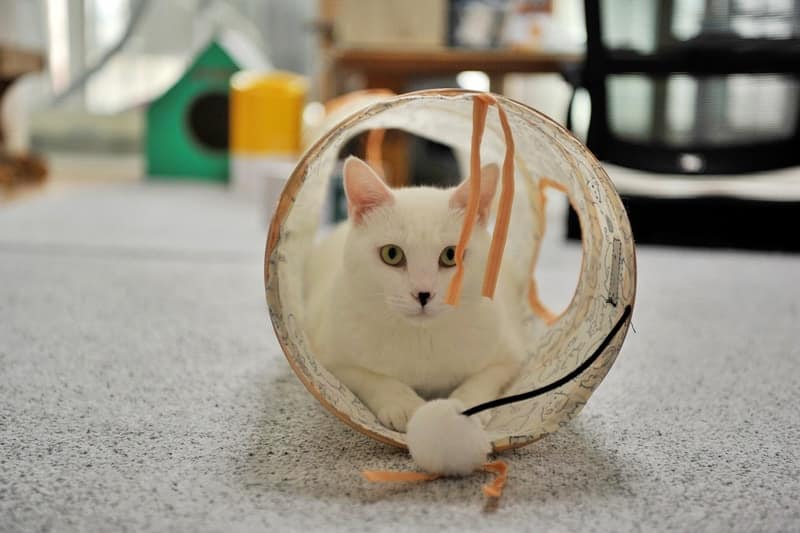

Conclusion
Osteoarthritis is a chronic degenerative joint disease that has no known single cause but that is influenced by many factors. It’s a progressive disease for which there’s no known cure. However, you can do several things at home to help your cat if they’re suffering from arthritis, including ensuring they maintain a healthy weight, encouraging gentle exercise, and even making your cat’s environment more accessible.
Speak with a veterinarian if your cat begins showing signs of osteoarthritis, such as walking stiffly or having trouble grooming. An accurate and early diagnosis of the condition often keeps cats running and being their sweet naughty selves for longer.
Featured Image Credit: Todorean Gabriel, Shutterstock
